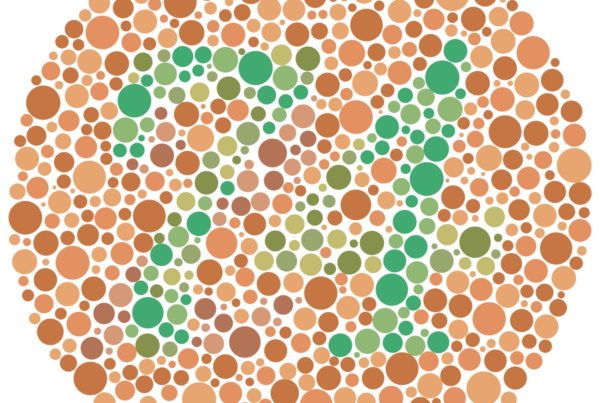
As web designers and developers, we have a responsibility to ensure that our creations are not only aesthetically pleasing but also accessible to all users, regardless of their abilities. This article explores the crucial balance between beauty and accessibility in web design, focusing on how to create websites that are both visually appealing and inclusive.
The Importance of Website Accessibility
Website accessibility refers to the practice of designing and developing websites that can be used by everyone, including people with disabilities. This concept is not just a nice-to-have feature; it’s a fundamental aspect of web design that can significantly impact a site’s usability, reach, and even legal compliance.
The Web Content Accessibility Guidelines (WCAG) provide a comprehensive set of recommendations for making web content more accessible. These guidelines are essential for creating inclusive digital experiences and are increasingly becoming a legal requirement in many countries.
Aesthetic Design vs. Accessibility: A False Dichotomy
One common misconception is that accessible websites must sacrifice visual appeal. This couldn’t be further from the truth. In fact, many principles of accessible design can enhance the overall user experience for everyone, not just those with disabilities.
Let’s explore some key areas where aesthetics and accessibility intersect, and how we can create beautiful, inclusive websites.
Color and Contrast
Colors play a crucial role in web design, setting the mood and guiding users through the interface. However, poor color choices can make a website inaccessible to users with visual impairments.
Accessibility Tip: Ensure sufficient color contrast between text and background. WCAG recommends a contrast ratio of at least 4.5:1 for normal text and 3:1 for large text.
Aesthetic Consideration: Use a harmonious color palette that adheres to your brand guidelines while meeting contrast requirements. Tools like the WebAIM Color Contrast Checker can help you find accessible color combinations that look great.
Typography and Readability
Beautiful typography can elevate a website’s design, but it shouldn’t come at the cost of readability.
Accessibility Tip: Choose fonts that are easy to read, especially at smaller sizes. Maintain a minimum font size of 16px for body text and ensure adequate line spacing.
Aesthetic Consideration: Experiment with font pairings to create visual interest while maintaining readability. Use headings and subheadings to create a clear visual hierarchy.
Layout and Structure
A well-structured layout is crucial for both aesthetics and accessibility. It guides users through the content and helps them understand the relationships between different elements.
Accessibility Tip: Use semantic HTML to create a logical document structure. This helps screen readers and other assistive technologies interpret the content correctly.
Aesthetic Consideration: Employ grid systems and whitespace to create a visually appealing layout that’s easy to navigate. Ensure that the visual hierarchy aligns with the semantic structure of the content.
Images and Media
Visual content is a powerful tool for engaging users, but it can pose challenges for those with visual impairments.
Accessibility Tip: Provide descriptive alt text for all images. For complex images or infographics, consider providing longer descriptions or accessible alternatives.
Aesthetic Consideration: Choose high-quality images that complement your design. Use image editing techniques to ensure that images look great across different devices and screen sizes.
Navigation and Interaction
Intuitive navigation is key to a good user experience, and it’s especially important for accessibility.
Accessibility Tip: Ensure that all interactive elements are keyboard accessible. Provide clear focus indicators for keyboard users.
Aesthetic Consideration: Design clickable elements with appropriate size and spacing. Use hover and focus states to provide visual feedback and enhance the interactive experience.
Responsive Design
With the increasing variety of devices used to access the web, responsive design is no longer optional.
Accessibility Tip: Ensure that your website is usable across different screen sizes and orientations. Test with various devices and assistive technologies.
Aesthetic Consideration: Design flexible layouts that adapt gracefully to different screen sizes. Use fluid typography and flexible images to maintain visual appeal across devices.
Forms and User Input
Forms are often necessary for user interaction, but they can be a significant barrier if not designed with accessibility in mind.
Accessibility Tip: Use clear labels for form fields and provide helpful error messages. Ensure that form controls are keyboard accessible.
Aesthetic Consideration: Design forms with a clean, minimalist approach. Use visual cues to guide users through the form-filling process.
Animations and Transitions
Subtle animations can add flair to a website, but they need to be implemented thoughtfully to avoid accessibility issues.
Accessibility Tip: Provide options to reduce motion for users who are sensitive to movement. Ensure that important information isn’t conveyed solely through animation.
Aesthetic Consideration: Use animations sparingly to enhance the user experience without overwhelming the interface. Consider using CSS transitions for smooth, performant animations.
Implementing Accessibility: A Step-by-Step Approach
Start with Accessibility in Mind
Incorporate accessibility considerations from the beginning of your design process. This approach is more efficient than retrofitting an existing design for accessibility.
Use Automated Testing Tools
Tools like AllAccessible can help identify many common accessibility issues. However, remember that automated tests can’t catch everything.
Conduct Manual Testing
Regularly test your website using a keyboard only, and try navigating with a screen reader. This hands-on approach can reveal issues that automated tools might miss.
Involve Users with Disabilities
Nothing beats real user feedback. Consider involving users with disabilities in your testing process to gain valuable insights.
Stay Updated on WCAG Guidelines
The Web Content Accessibility Guidelines are regularly updated. Stay informed about the latest recommendations to ensure your websites remain compliant.
Document Your Accessibility Features
Create an accessibility statement for your website, detailing the measures you’ve taken to ensure inclusivity.
The Business Case for Accessible Websites
Beyond the ethical imperative, there are compelling business reasons to prioritize website accessibility:
- Expanded Reach: An accessible website can reach a wider audience, including the millions of people worldwide with disabilities.
- Improved SEO: Many accessibility practices, such as proper heading structure and descriptive alt text, can boost your website’s search engine optimization.
- Legal Compliance: With increasing legislation around digital accessibility, having an accessible website can help avoid potential legal issues.
- Enhanced User Experience: Many accessibility features, such as clear navigation and readable text, improve the experience for all users, not just those with disabilities.
- Brand Reputation: Demonstrating a commitment to inclusivity can enhance your brand’s reputation and appeal to socially conscious consumers.
Balancing aesthetics and accessibility in web design is not just possible; it’s essential for creating truly outstanding websites. By incorporating accessibility principles into our design process, we can create beautiful, inclusive digital experiences that cater to all users.
Remember, an accessible website is not a compromise on design; it’s an opportunity to innovate and create solutions that benefit everyone. As web professionals, it’s our responsibility to champion this inclusive approach and set new standards for what constitutes great web design.
By embracing both aesthetics and accessibility, we can create websites that are not only visually stunning but also truly inclusive, reaching a wider audience and making the web a better place for all.


